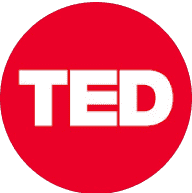Fractals in Nature
Sigma Documentaries・1 minute read
Fractals, found in nature and mathematics, have impacted fields like computing, biology, and medicine through their self-similar patterns. These patterns aid in delivering nutrients efficiently, support structures, and simplify living structures, inspiring human creations and advancements in various scientific and technological domains.
Insights
- Fractals, seen in natural structures like shells and broccoli, play a crucial role in nutrient distribution and structural support, simplifying complex processes in biology and offering insights for technological advancements.
- The historical influence of fractals on human creations, from town planning to art, has led to a modern preference for fractal geometry in various fields, driving innovation in mathematics, science, and technology.
Get key ideas from YouTube videos. It’s free
Recent questions
What are fractals?
Fractals are self-similar patterns found in nature and mathematics, advancing scientific fields like computing, biology, and medicine.
How do natural fractals benefit organisms?
Natural fractals, like the nautilus shell and romanesco broccoli, efficiently deliver nutrients and support structures due to their self-similar patterns, aiding in processes like nutrient flow and growth.
Do non-biological processes exhibit fractal features?
Yes, non-biological processes like snowflakes and metal microstructures resemble trees, showcasing self-similarity in various natural phenomena.
Why do fractals occur in nature?
Fractals occur in nature due to repetitive forces or processes, simplifying living structures like fern leaves and aiding in genetic storage of information, offering a method for simplification.
How have fractals influenced human creations?
Fractals have historically inspired human creations, influencing town layouts and art designs, with modern research showing a preference for fractal geometry in art, leading to advancements in mathematics, science, and technology.
Related videos
Summary
00:00
Fractals: Nature's Patterns Inspire Science and Art
- Fractals, self-similar patterns found in nature and mathematics, have advanced various scientific fields like computing, biology, and medicine, offering new perspectives on science and technology.
- Natural fractals, like the nautilus shell and romanesco broccoli, efficiently deliver nutrients and support structures due to their self-similar patterns, aiding in processes like nutrient flow and growth.
- Non-biological processes also exhibit fractal features, such as snowflakes and metal microstructures resembling trees, showcasing self-similarity in various natural phenomena.
- Fractals occur in nature due to repetitive forces or processes, simplifying living structures like fern leaves and aiding in genetic storage of information, offering a method for simplification.
- Fractals have inspired human creations historically, influencing town layouts and art designs, with modern research showing a preference for fractal geometry in art, leading to advancements in mathematics, science, and technology.




